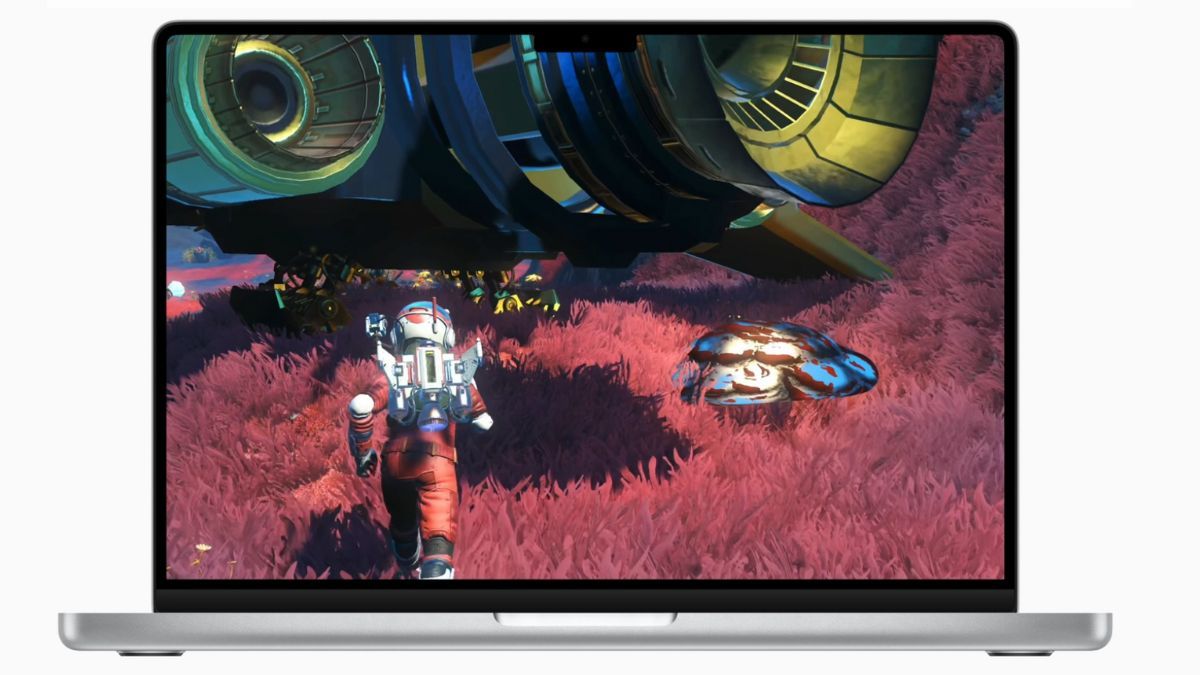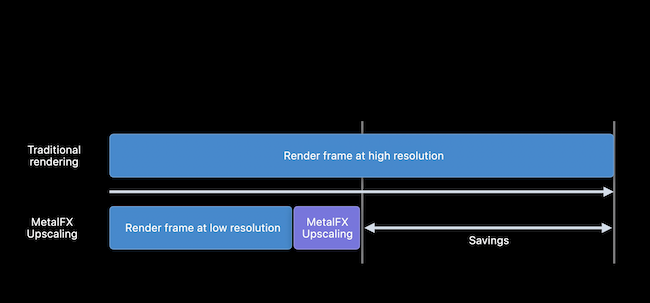Quick Links
Apple's MetalFX AI upscaling technology brings a feature to iOS and macOS devices that even the PlayStation 5 and Xbox Series X|S lack. It's the latest in a series of moves that show the company is serious about gaming again.
MetalFX Is a Literal Game Changer
MetalFX is a new part of Apple's Metal API, which makes it easy for Mac and iOS game developers to tap into the full potential of Apple's hardware.
Just like NVIDIA's DLSS and Intel's XeSS systems, MetalFX uses AI algorithms to upscale the resolution of video game output frames. So, for example, the GPU in your Mac might render the game at 1080p, but MetalFX works to make it look like a 4K image, while still getting the smoother frame rates of the base resolution.
The ability to leverage AI to strike a good balance between performance and image quality is a key technology in modern gaming, and adding this to Metal gives game developers the tools to achieve great things on Apple devices.
The First MetalFX Games
The headlining games that feature MetalFX that we know of so far are Resident Evil 8 Village, GRID Legends, and No Man's Sky. All three are arriving as native Apple Silicon games that use MetalFX to supercharge their image quality.
At the time of writing, Resident Evil Village is already in the hands of reviewers, and even technically scrupulous reviewers are impressed. Given that even Apple's most humble Apple Silicon devices can accommodate these games thanks to MetalFX, it removes yet another reason for game developers to skip Macs.
MetalFX Is the Cherry on the Apple Gaming Pie
Most people don't think of Apple as a gaming brand, but the truth is that the company makes more money from video games than the big three gaming console brands combined. This hasn't happened by accident. It's the result of concerted efforts to improve iOS and macOS platforms for gamers and developers.
It's also easy to forget that Apple used to be a big deal in gaming. Games like Myst and Prince of Persia were Apple computer games first. Bungie, the company behind the smash-hit Halo franchise, were Mac game developers, with shooters like Marathon acting as a precursor to Halo. In fact, Halo was originally announced for Mac!
Since Macs have lost that gaming luster, the company has worked to create a solid foundation for gaming in its ecosystem, even before MetalFX. A good example of this is how Apple mandated a standard for controller support on its devices. This meant that any MFi-certified controller would work with a game designed for the standard. On Android, proprietary standards proliferated, so one game might work with one controller, but not another.
Today, Sony, Nintendo, and Microsoft controllers all work seamlessly with Apple products. Apple has its own gaming subscription service, Apple Arcade, and even devices like the humble Apple TV now have a GPU to rival the Xbox One.
Apple Silicon Macs, even the base M1 Air, are also more powerful than the previous generation consoles, comparable to mainstream gaming PCs used by typical Steam users where GPUs such as the NVIDIA GTX 1050 Ti are still in widespread use.
Having the hardware and software ecosystem in place is important, but Apple's Metal API brought it all together. It's designed to get the most performance from that hardware by minimizing overhead. Something that's known as getting closer to the "bare metal" of the hardware. Hence the name!
Gaming Beyond The Mac
With all this being said, Apple Macs still have a small fraction of the total computer market share. No matter how welcoming the tools and hardware may be, why should game developers invest in porting or developing games if the market is too small?
While Macs might have a small share of the laptop and desktop market, mobile devices such as iPhones, iPads, and Apple TVs represent a much larger user base. Metal is unified across both iOS and macOS. Apple Silicon Macs run the same software code as every other Apple mobile device.
This means developers can use Metal and MetalFX to port games for the enormous iPhone and iPad markets and make an Apple Silicon Mac version of that game available with little to no additional effort. The line between macOS and iOS gets more blurred with each new version of each operating system, and under the hood, that line barely exists.
As a case in point, No Man's Sky is also coming to iPad models with M1 or M2 chips, replete with MetalFX and presumably the same visual settings you'd get on a Mac with the same specifications. Apple now has the hardware, software tools, and user install base to get major game developer interest, now only time will tell if they'll take the bait and make Mac gaming a real option rather than the subject of jokes.



